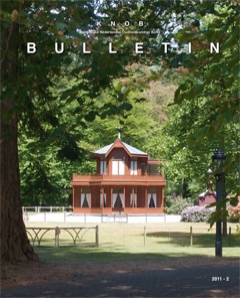Indexering ESCI / Scopus


Paul Rem: De chalets van koningin Wilhelmina in de paleisparken van Het Loo (1881-1882) en Soestdijk (1892). Dennis de Kool: Jan Baptist Xavery (1697-1742): een veelzijdige tuinkunstenaar. Patricia Debie: Van tuinpaviljoen naar koepelkamer. Geschiedenis en ontwikkeling van de Utrechtse Maliebaan. Rob Dettingmeijer, Marie-Thérèse van Thoor en Ida van Zijl (red.), Rietvelds Universum; Ida van Zijl, Gerrit Rietveld (recensie Herman van Bergeijk). C.P. Krabbe: Droomreis op papier. De Prix de Rome en de Nederlandse architectuur (1808-1851) (recensie Wilfred van Leeuwen).
The chalets that were built for her in the grounds of the summer palaces Het Loo and Soestdijk featured prominently in the life of Dutch Queen Wilhelmina (1880-1962). The chalet at Het Loo was for playing and studying. She would also cook there and entertain guests. And she learned how to care for the animals and worked in the vegetable garden. The chalet in the grounds of Soestdijk was built during the regency of Wilhelmina's mother, Queen Emma. Wilhelmina was already twelve years old at the time, so there will have been less playing here. The Soestdijk chalet may have been used as a...
Dutch garden sculpture from the 18 th century is worthy of more systematic study. Such research may offer valuable insights into the position of garden sculpture within sculpture proper and its meaning in 18 th-century garden art. Jan Baptist Xavery is regarded as one of the most important sculptors working in the Netherlands during the 18 th century. His artistic career, his versatile body of work and his influence on other artists should therefore be studied in more depth. In view of the bloom in garden art in those days Xavery's significance as a...
At the beginning of the 17 th century the Utrecht Maliebaan is praised as an urban linear park for its dead straight design and the four rows of trees planted on both sides. The shady avenue was soon lined with playgrounds and pleasure gardens with small constructions called garden pavilions, domes or play houses, which served as comfortable summer residences. One of the first remarkable garden pavilions on the Maliebaan is House Descartes, probably co-designed by the philosopher Descartes himself. Influenced by his close contacts with the poet Constantijn Huygens and...


open access mogelijk gemaakt door Stichting OpenAccess
